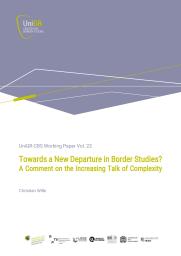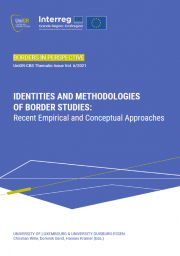Working Paper Vol. 22

Since the mid-2010s at the latest, there has been discussion of the border as a complex phenomenon, aimed at a more comprehensive and differentiated understanding of b/orderings. However, there seems to be an imprecise use of the term ‘complexity’ in the academic debate, and sometimes, still, an everyday understanding of complexity prevails. To sharpen the debate around a border’s complexity, in this comment, in a first step, I show what border scholars currently consider complex and question which analytical and conceptual developments in the wake of the bordering turn have encouraged the increasing talk of complex borders. In the second step, I suggest how border research can be inspired by complexity theories, in focusing on performative interrelations and their emergent dis/orders that become spatially and socially effective.


